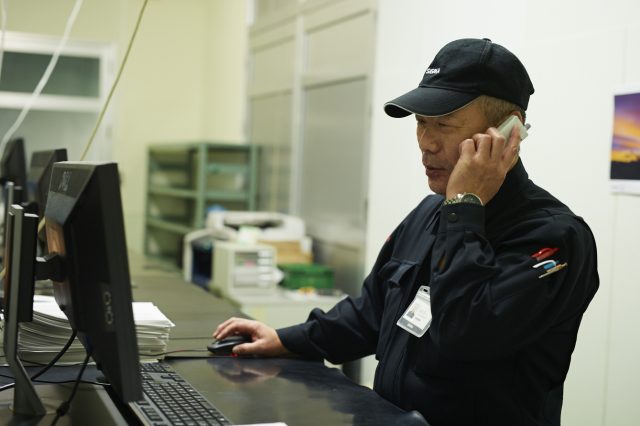Head of 2nd Optical Element Manufacturing DivisionMunekazu Tsukada
It’s been 35 years now since I joined SIGMA. When I joined, I was assigned to the lens grinding processes. At the beginning I didn’t really know anything, so I simply focused on the work right in front of me. I was very motivated, though. “I won’t lose out to anyone, not in quantity and not in quality”. I’ve been born in Aizu and raised in Aizu. Maybe that’s why I hate losing. (laughs)
Back in those days, the factory wasn’t as clean as it is now. To be blunt, it was quite dirty. (laughs) At the time, burning was part of the lens grinding process, and the factory was always dirty from the soot. Seeing this during a factory visit, the previous company president said, “Let’s do this differently.”
SIGMA is a company that has always been very open to new approaches and new machines. No funds are spared when it comes to capital investments. SIGMA isn’t that large a company, but this only means that if you stop being enterprising, you won’t be able to compete. “Bamboo spears won’t win a battle”, that was the former president’s favourite saying.
The machinery required to create optical instruments will always be relatively expensive, that’s not going to change. So when we ask for new equipment, we do so rather timidly and without daring to look at the price list. (laughs) But in the end, the strength of our manufacturing machinery is the lifeline of the company, and so we are always lent an open ear. Speaking as a manufacturer, I’m very thankful for the work environment here.
My work nowadays includes vaporisation, coring, assembling and ink painting processes. Compared to the earlier days, both the processes and the technology involved have changed. But so have the camera lenses themselves, haven’t they? Inside a single objective there’s a multitude of lenses, carefully assembled. All the latest objectives require a small F stop to let more light in, and the trend points towards more lens elements, each with a larger diameter. It goes without saying that, as a result, the manufacturing process becomes more difficult. However, no matter the tough demands we’re faced with, we will never say, “That’s not possible”. When a new blueprint arrives, even if it looks difficult at first, I eventually accept the challenge. “What can’t be made here can’t be made anywhere else. Let’s try and see if we can do it”. This mindset is not limited to my own department. I’d say the same attitude can be found in any department and during any process at SIGMA. Many years ago, our president Kazuto Yamaki defined our goal: “the world’s best quality products”. Everyone here is working hard to attain this standard.
In order to achieve our goal, it’s vital to keep improving everything that can be improved. It’s in SIGMA’s spirit to consider different viewpoints and to approach new ideas with an open mind. We’re not held back by fixed positions. You try out new ideas, and if it doesn’t work, just move on and try the next thing. Don’t reject change, be open and approach new ideas. We’re in an age of rapid technological advances and high expectations. If we didn’t do things this way, we would not be able to improve ourselves.
Munekazu Tsukada
Born in Bandai-town (Yama-gun) in Fukushima Prefecture’s Aizu region. Joined SIGMA in 1982 and was assigned to the 1st optical elements manufacturing department. He has been working at his current position since 2013.“I know everything here – I’ve been living in Bandai since before the factory was built.”

Episode in Aizu
Munekazu Tsukada works tirelessly to supply us with lenses. He is always the very first to listen our engineers’ suggestions and to experiment with new manufacturing materials or methods, and he possesses the necessary flexibility to introduce them to the company. He is a reliable, important member of the crucial 2nd Optical Division of our Aizu factory.
(Kenichi Kubota, optical elements manufacturing supervisor)